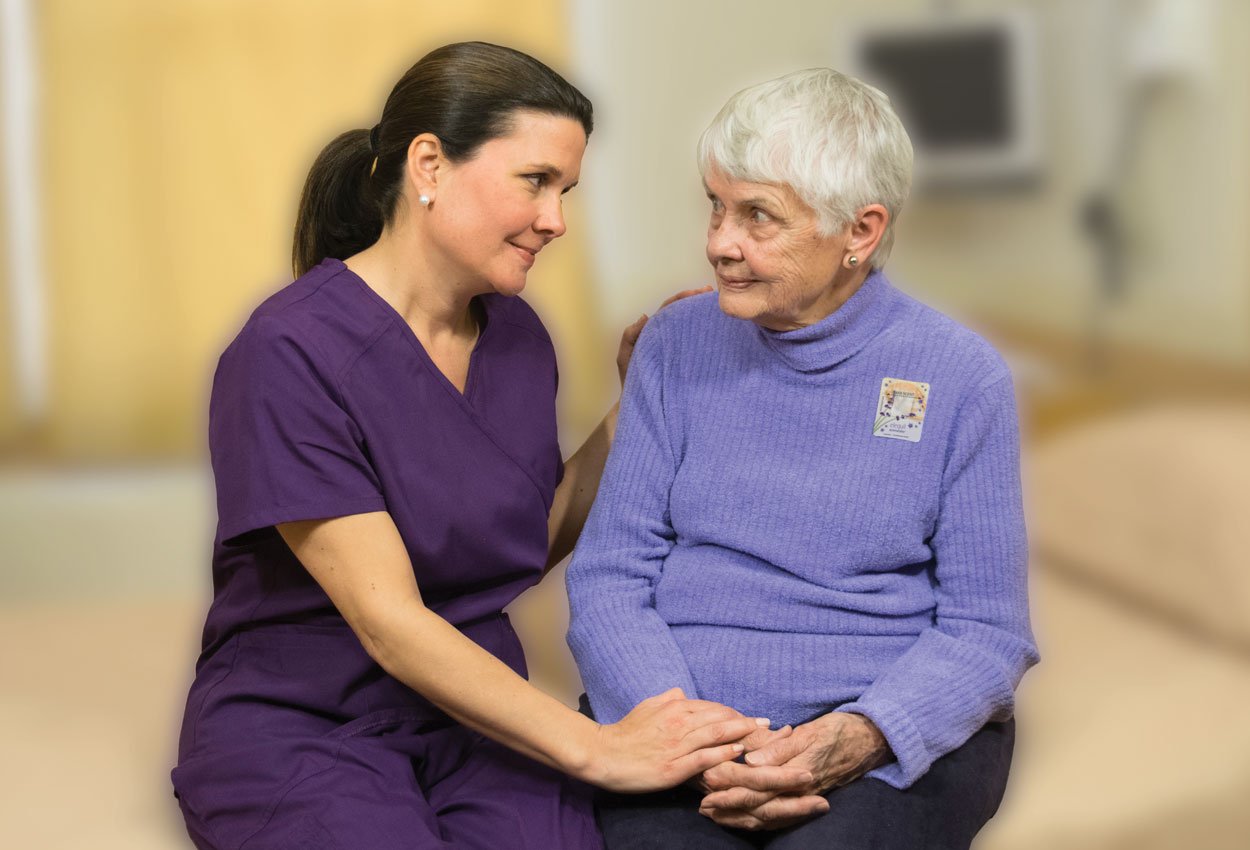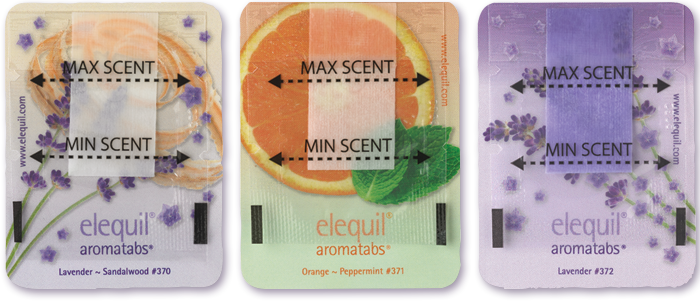
Part one of a four part series
- While pharmacological solutions are effective in targeting specific symptoms, hospital staff are in want for safe and flexible non-pharmacological solutions that help relieve common discomfort—pain, sleeplessness, anxiety about an upcoming procedure—and can be administered at the discretion of nurses and other providers on the front lines of patient care.
Clinical aromatherapy has emerged as one such solution, and it is growing in popularity across departmental and organizational lines.
Clinical aromatherapy in the healthcare setting
In fact, out of 100 hospital executives interviewed about their experience and perspective on aromatherapy in the clinical setting, 37% already had an aromatherapy initiative in place and 31% were in the process of forming their aromatherapy initiative within their hospital.
Implementing in one department may be fairly easy – for instance, offering aromatherapy to patients receiving a breast biopsy. However, when implementing an initiative within multiple departments, hospital-wide, or one unit that is high volume, such as surgery, many questions arise.
Because of the popularity of the Elequil aromatabs® brand, aromatherapy made for the clinical setting, we are often asked how others successfully achieved adaptation of an aromatherapy initiative.
Expert panelists weigh in on building a successful program:
As a result, Beekley Medical teamed up with Worldwide Business Research to present a webinar that included the expertise and experience of three panelists using aromatherapy within their role at their hospital:
• Niels Tobiasson RN, BSN, OR Nurse/Surgery at a large hospital HCS in Texas
• Kristine Kowalski BSN, PHN, MA, CHPCA, Palliative Care Coordinator at Mission Hospital, CA
• Alicia Plumer, MSN, RN, CPAN, Nurse Manager, PACU at Woman’s Hospital in Louisiana
During the webinar, there was an abundance of questions for the panel on how they implemented aromatherapy at their facility. Since others in healthcare have the same questions we compiled the panelists' answers into a blog series for others seeking guidance on how to build a successful aromatherapy initiative as a non-pharmacological approach.
Q: How did you first hear of aromatherapy for the clinical setting and how did you put it into practice:
 Alicia: At Woman’s Hospital, we have a product standardization committee that any new products flow through. We had some employees, staff members and the materials management team that had seen different aromatherapy products at nursing and patient care conferences. These aromatherapy products were brought back to our facility to determine interest in bringing them into the organization. We also had several patient requests prior to that, but we weren't just sure how to offer and operationalize the aromatherapy process. We filtered it through our product standardization committee and moved forward with a trial and through the steps of that process.
Alicia: At Woman’s Hospital, we have a product standardization committee that any new products flow through. We had some employees, staff members and the materials management team that had seen different aromatherapy products at nursing and patient care conferences. These aromatherapy products were brought back to our facility to determine interest in bringing them into the organization. We also had several patient requests prior to that, but we weren't just sure how to offer and operationalize the aromatherapy process. We filtered it through our product standardization committee and moved forward with a trial and through the steps of that process.
 Kristine: When I started here at Mission Hospital, the aromatherapy program was already in place. However, it was limited to the outpatient or endoscopy procedural room. I realized it was truly being underutilized and I wanted to expand the aromatherapy program to include the inpatient, outpatient, and palliative care. And of course once the word got around, now it's being utilized in pre and post-op surgical units and L & D. It was originally used only for queasiness, and now we're also utilizing it to increase patient comfort and relief of symptoms.
Kristine: When I started here at Mission Hospital, the aromatherapy program was already in place. However, it was limited to the outpatient or endoscopy procedural room. I realized it was truly being underutilized and I wanted to expand the aromatherapy program to include the inpatient, outpatient, and palliative care. And of course once the word got around, now it's being utilized in pre and post-op surgical units and L & D. It was originally used only for queasiness, and now we're also utilizing it to increase patient comfort and relief of symptoms.
 Niels: I first originally heard about aromatherapy when I was in a nurse internship during nursing school. I saw it in one of the operating rooms. It made me realize when I was on the floor that a lot of the patients were needing something to help them and they didn't really have any aromatherapy in use at the time in that area. I then went back to the operating room here in Texas and that's how I first learned about aromatherapy.
Niels: I first originally heard about aromatherapy when I was in a nurse internship during nursing school. I saw it in one of the operating rooms. It made me realize when I was on the floor that a lot of the patients were needing something to help them and they didn't really have any aromatherapy in use at the time in that area. I then went back to the operating room here in Texas and that's how I first learned about aromatherapy.
I then had an opportunity through my employer to do a quality improvement project to introduce it into the hospital because there was not currently a policy in place for it. I needed to get permission from the directors of each department - the operating room, pre-op, post-op and PACU so that we could use aromatherapy knowing that the policy was in the works. I got all the approval from everyone and started using it in the operating room.
Q: What are the greatest benefits the patients in their hospital have seen since first implementing their aromatherapy program?
 Alicia: We have not to this point collected any data, but feedback from the staff and patients indicate that this is a great patient satisfier. We've had patients actually ask for information on how they can order the aromatabs from home. They are very pleased that we have aromatherapy available.
Alicia: We have not to this point collected any data, but feedback from the staff and patients indicate that this is a great patient satisfier. We've had patients actually ask for information on how they can order the aromatabs from home. They are very pleased that we have aromatherapy available.
We also have a strong perception from the nurses, especially in the PACU, that they're seeing a decrease in queasiness when they use aromatherapy and a decreased need of using traditional medications to treat nausea. In our imaging and breast procedure areas, we have received feedback from the staff that they're using it for a procedural anxiousness, and it has really helped patients.
 Kristine: Since we've implemented aromatherapy by distributing it throughout the hospital and the outpatient clinic, we've identified improvements in pain and not only with just our cancer and palliative patients. It is also distributed to the non-terminal or non-end of life patients. Neurology and orthopedics are also receiving benefits from using aromatherapy and seeing an improvement in anxiousness. We have a behavioral care unit in our associate hospital and they’re utilizing the products and identifying improvements, and as a result are having to utilize less of the traditional medications. For all our patients receiving chemo, it's one of the first lines of alternative medications that we offer these patients. And every patient and their family have received an overwhelming benefit from having these products available during the actual chemo process.
Kristine: Since we've implemented aromatherapy by distributing it throughout the hospital and the outpatient clinic, we've identified improvements in pain and not only with just our cancer and palliative patients. It is also distributed to the non-terminal or non-end of life patients. Neurology and orthopedics are also receiving benefits from using aromatherapy and seeing an improvement in anxiousness. We have a behavioral care unit in our associate hospital and they’re utilizing the products and identifying improvements, and as a result are having to utilize less of the traditional medications. For all our patients receiving chemo, it's one of the first lines of alternative medications that we offer these patients. And every patient and their family have received an overwhelming benefit from having these products available during the actual chemo process.
 Niels: When I originally started the program, I was the first pilot study for this health system, and I talked with some of the nurses, found out how they felt that aromatherapy was working. We were able to do some research on it and found that, for our patients that were using it, it was 92% effective, which is a really high number compared to most other studies I've looked at. So, I went back to the data and made sure it was accurate and it was, which is just an awesome benefit for our patients. We normally use it for queasiness, vomiting or any anxiousness. And we will help give it either before surgery, during surgery or in the PACU.
Niels: When I originally started the program, I was the first pilot study for this health system, and I talked with some of the nurses, found out how they felt that aromatherapy was working. We were able to do some research on it and found that, for our patients that were using it, it was 92% effective, which is a really high number compared to most other studies I've looked at. So, I went back to the data and made sure it was accurate and it was, which is just an awesome benefit for our patients. We normally use it for queasiness, vomiting or any anxiousness. And we will help give it either before surgery, during surgery or in the PACU.
Coming in Part 2 - Getting stakeholder buy-in, training staff, and patient success stories
In the next blog of this series (publication date Feb 28, 2020), the expert panel will share positive patient stories when using aromatherapy, how they determined which aromatherapy product to use in the hospital, how they went about training the staff, how they went about getting key stakeholders and decision makers on board, how starting an aromatherapy program compares to other programs started in the hospital, and top recommendations on how to get started.
To learn more about Elequil® and the use of aromatherapy in the clinical setting, visit Elequil.com. To request materials for a trial evaluation at your clinic, contact your Elequil Account Manager at 1-800-233-5539 or info@beekley.com
Related articles:

Melissa Vibberts
Director of Brand Management
